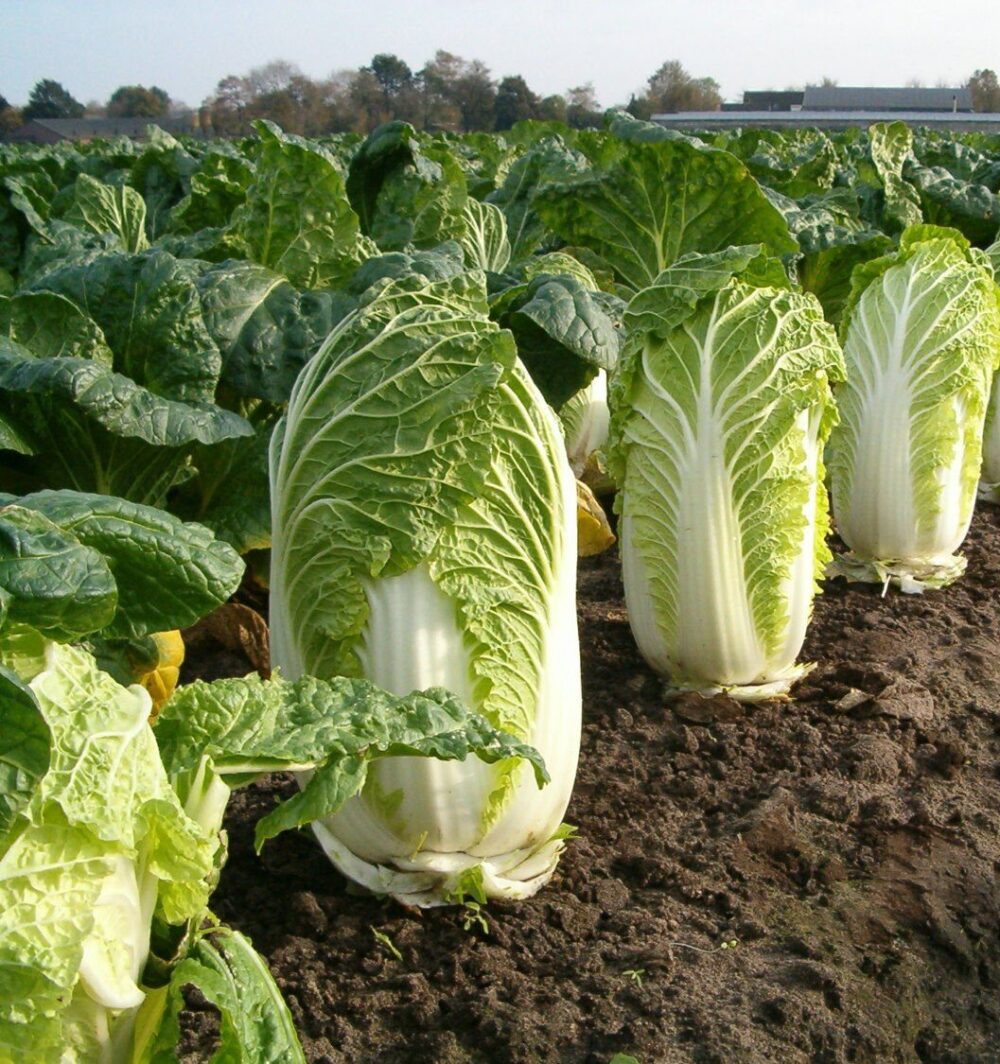Napa Cabbage Open Pollinated Seeds
Quantity: 3 grams
Growing Napa Cabbage Open Pollinated Seeds in India can be a rewarding experience, particularly in regions with suitable climate conditions.
By following the right planting, care, and harvesting practices, you can enjoy a bountiful harvest of this nutritious and versatile vegetable. Whether used in stir-fries, salads, or traditional dishes, Napa cabbage can be a valuable addition to your garden and diet.
heirloom seeds, organic seeds, desi seeds, gardening seeds,
Out of stock
Napa Cabbage Open Pollinated Seeds
Chinese cabbage, also known as Napa cabbage or Brassica rapa subsp. pekinensis, is not native to India. It originated in East Asia, particularly in China, where it has been cultivated for centuries. It is widely used in Chinese, Korean, and Japanese cuisines.
Chinese cabbage has a long history of cultivation in East Asia, with its origins tracing back to ancient China. It was later introduced to other parts of Asia, including Korea and Japan, where it became a staple vegetable in various traditional dishes.
Growing Napa cabbage in India is quite feasible, especially in regions with cooler climates or during the winter season. Here are some detailed guidelines on how to grow Napa cabbage successfully in India:
Climate and Soil Requirements
- Climate: Napa Cabbage Open Pollinated Seeds thrives in cool weather. The ideal temperature range for growing Napa cabbage is between 15°C to 20°C. In India, the best time to plant Napa cabbage is during the winter season (October to February), as the cooler temperatures are suitable for its growth.
- Soil: Napa cabbage prefers well-drained, fertile soils rich in organic matter. The ideal soil pH is between 6.0 and 7.5. Loamy or sandy loam soils are perfect for cultivation.
Planting Napa Cabbage
- Seed Selection: Choose high-quality seeds. Ensure that the seeds are suitable for the climatic conditions in your region.
- Seed Starting:
- Seeds can be started indoors or sown directly in the field.
- If starting indoors, sow the seeds in seed trays or small pots about 4-6 weeks before the last expected frost date. Transplant the seedlings to the garden when they have 4-6 true leaves.
- For direct sowing, plant the seeds about 0.5 cm deep and space them 30-45 cm apart in rows that are 60-90 cm apart.
- Transplanting: If starting seeds indoors, transplant the seedlings to the garden when they are 4-6 weeks old and have at least 4-6 true leaves. Space the plants 30-45 cm apart in rows that are 60-90 cm apart.
Care and Maintenance
- Watering:
- Napa cabbage requires consistent moisture for optimal growth. Water the plants regularly to keep the soil evenly moist but not waterlogged. Overwatering can lead to root rot and other diseases.
- Fertilization:
- Napa cabbage is a heavy feeder. Prepare the soil with plenty of compost or well-rotted manure before planting.
- Weeding:
- Keep the planting area free from weeds, which can compete with the cabbage for nutrients and water. Mulching around the plants can help suppress weed growth and retain soil moisture.
Harvesting Napa Cabbage
- Timing:
- Napa Cabbage Open Pollinated Seeds is usually ready for harvest 70-90 days after planting. Harvest when the heads are firm and well-formed.
- Method:
- Use a sharp knife to cut the cabbage head at the base, leaving the outer leaves and stem in the ground. This can encourage a second, smaller crop of heads to develop.
- Storage:
- After harvesting, store Napa cabbage in a cool, humid environment. It can be kept in the refrigerator for several weeks.
Conclusion
Growing Napa Cabbage Open Pollinated Seeds in India can be a rewarding experience, particularly in regions with suitable climate conditions.
By following the right planting, care, and harvesting practices, you can enjoy a bountiful harvest of this nutritious and versatile vegetable. Whether used in stir-fries, salads, or traditional dishes, Napa cabbage can be a valuable addition to your garden and diet.
| Weight | 12 g |
|---|---|
| Dimensions | 11 × 8.5 × 11 cm |







Reviews
There are no reviews yet.